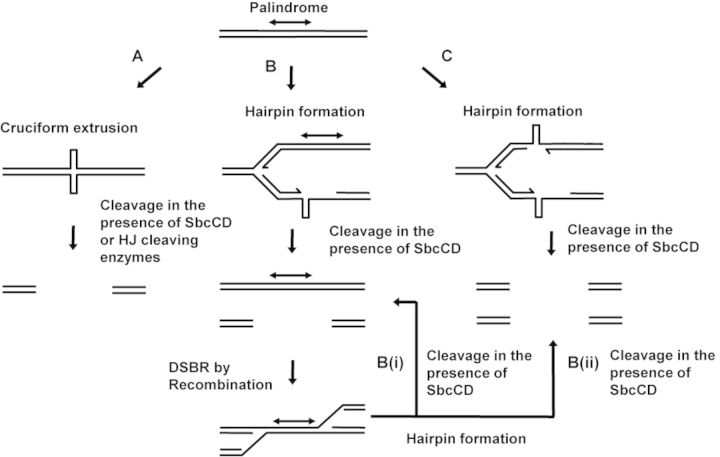Figure 2.
Hypotheses to explain the death caused by SbcCD cleavage of a perfect palindrome. (A) It has been suggested that there is a pathway of cruciform extrusion in vivo. However, the evidence is either indirect or involves very AT rich sequences. How these structures are processed, if they are formed, is unknown but they would be expected to be sensitive to cleavage by SbcCD and enzymes recognizing Holliday junctions (HJs). (B) SbcCD cleavage of a hairpin DNA structure formed during DNA replication leading to a two-ended DSB is repaired by recombination with a sister chromosome. Cleavage at an interrupted palindrome results in efficient repair. However, cleavage at a perfect palindrome might interfere with productive repair by either of the pathways B(i) or B(ii). In pathway B(i), the hairpin reforms during repair on only one of the sister chromosomes and death is caused by an endless cycle of cleavage, repair and re-cleavage. In pathway B(ii), hairpins form on both the sister chromosomes during repair and cleavage results in loss of any repair template. (C) Hairpins are formed on both the leading and lagging-strand templates during chromosomal DNA replication. Cleavage of both hairpins by SbcCD results in no template for repair.

